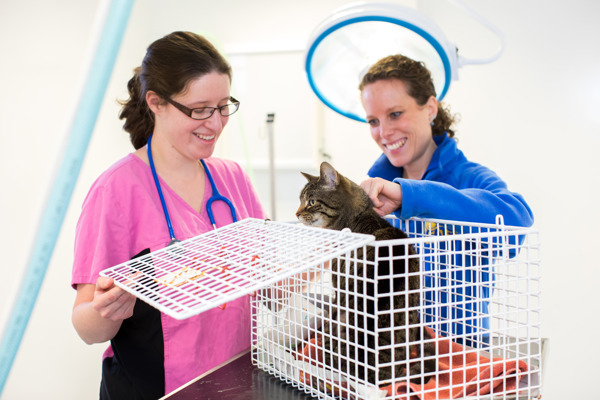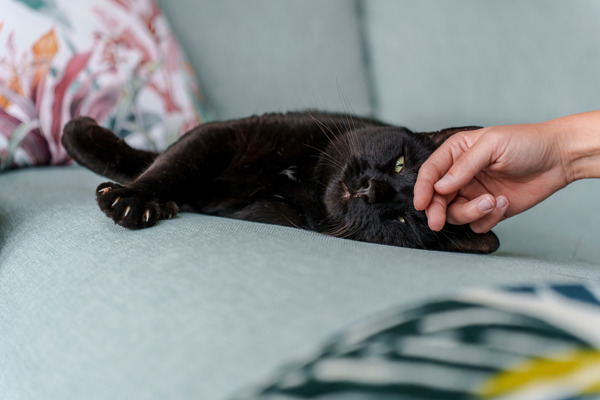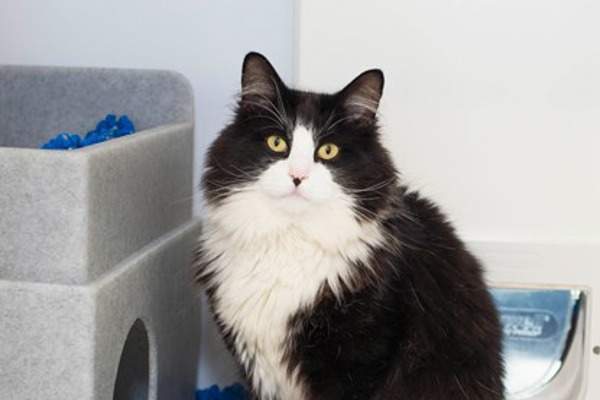A step-by-step guide to teach your cat to be comfortable with handling
Some cats love a cuddle and will happily let you pick them up. Particularly if they have a close bond with you already. But not all cats favour such close contact.
There are many reasons why they could be wary of being touched. They could have not been properly socialised as a kitten, or they could be in pain. If your cat shows any signs of discomfort with handling, get them checked by a vet first to rule out any medical problems.
Whether your cat loves a fuss or not, it’s important to remember that most cats like to be in control of any human contact they get. It’s best to let them come to you and give them the choice to move away if they want to.
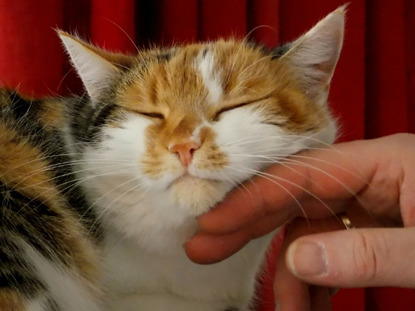
Sometimes though, handling your cat is essential. Such as when it’s time for a visit to the vet or you need to give them some medication.
The secret to stress-free handling is to make it a predictable and cooperative process. Give your cat some warning that you are going to approach them. This will reduce the chance of them becoming scared.
For this, it’s helpful to have a special mat or towel that you only bring out for handling training. You can also use a special word or phrase that you say before each time you handle your cat. For example, ‘touch’. This will prepare them for what comes next.
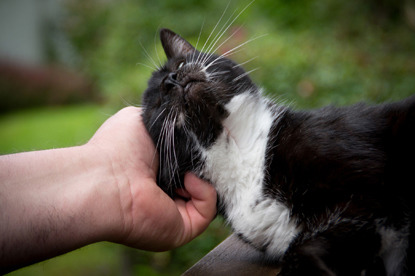
To make the training more amusing for yourself, you could even pick whichever word you like. Your cat will only hear the sound, not understand the meaning. Pineapple, spatula, tambourine…whatever takes your fancy. But make sure you stick to the same word throughout.
You will need
- a physically able and confident cat (older or unwell cats might struggle)
- a quiet room with no distractions
- some tasty cat treats
- a mat or towel
- a bit of patience
7 steps to teach your cat to be comfortable with handling
- To begin training, pick a moment when your cat is feeling relaxed. Make sure they are in a familiar, safe environment with no distractions. Set your training mat/towel out on the floor. Sit at your cat’s level with a small pot of treats beside you.
- If your cat approaches and is calm, preferably standing still or sitting, say your chosen word, for example ‘touch’. Move your hand to touch your cat in an area they like being touched, such as the side of the neck, for one second. To build a strong positive association with being touched, give them a treat directly afterwards.
- If your cat is comfortable with the handling, repeat steps one and two. Keep training sessions short, lasting two minutes at most.
- Once your cat is comfortable with this, start moving your hand towards an area your cat is less comfortable with being touched. For example, move your hand from the side of the neck to the back of the neck. Again, repeat this process during short sessions that last two minutes at most.
- When they are comfortable with this, you can then start to build up the duration of the handling from one second each time to two or three seconds.
- Once your cat is comfortable with this, you can then move the training session to different environments. For example, on the table to prepare them for vet visits. Remember to keep using the training mat/towel.
- When you next take your cat to the vet, take the mat/towel with you. Explain to your vet what you have been doing. They can hopefully work with you to make the check-up a stress-free experience for everyone.
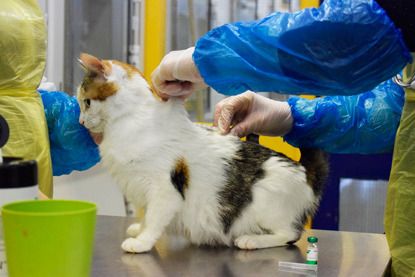
If you cat shows signs that they are uncomfortable during training, it means that you have moved too quickly. Go back a step. Make sure your cat always has the option to move away throughout the training. Never restrain them.
This training is only for cats who have a good bond with their owner but are uncomfortable with some areas of handling. It is not suitable for fearful cats that hide away from humans or show aggression towards them. In these instances, you should contact a qualified behaviourist for advice.
Find more help and advice on cat behaviour.

